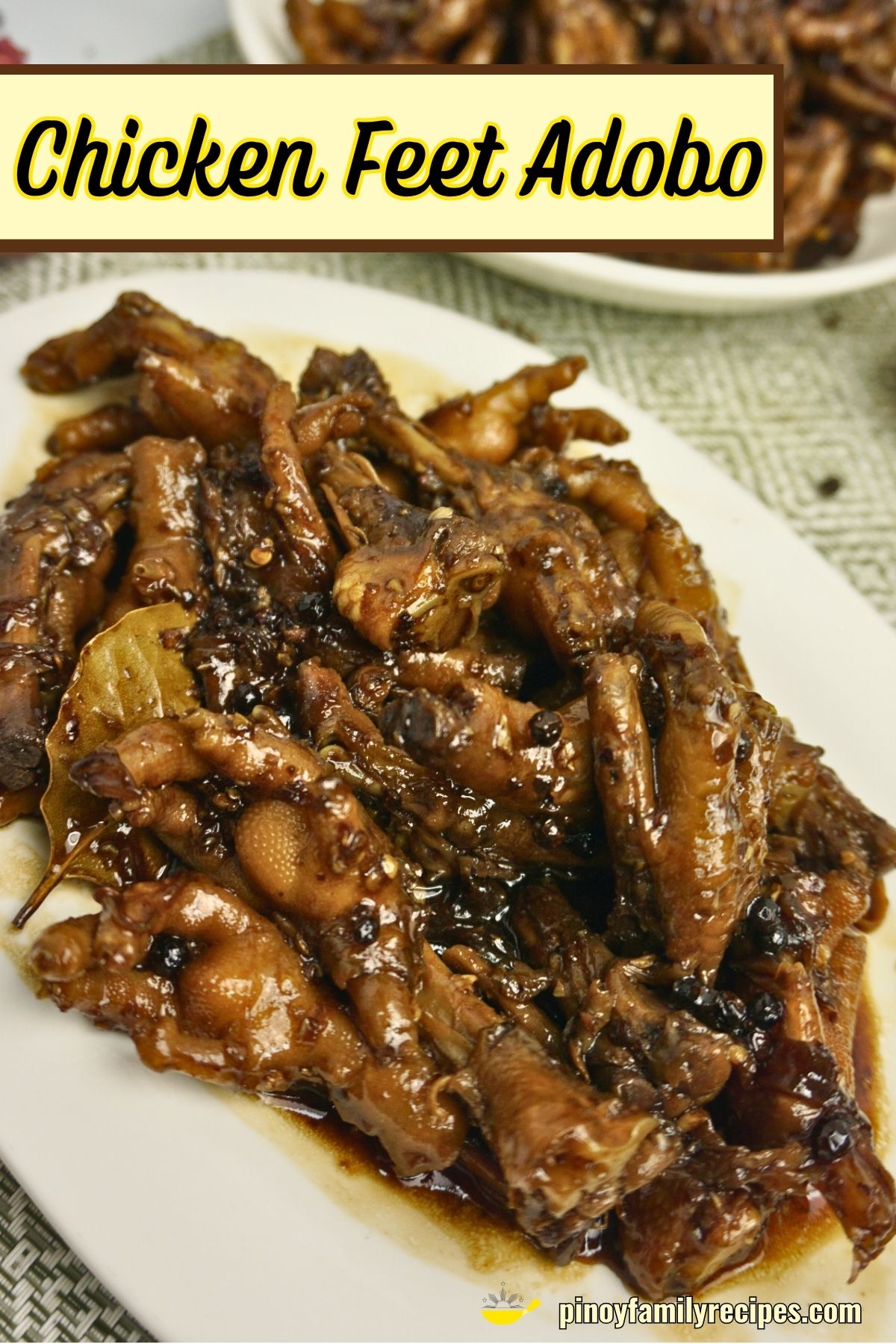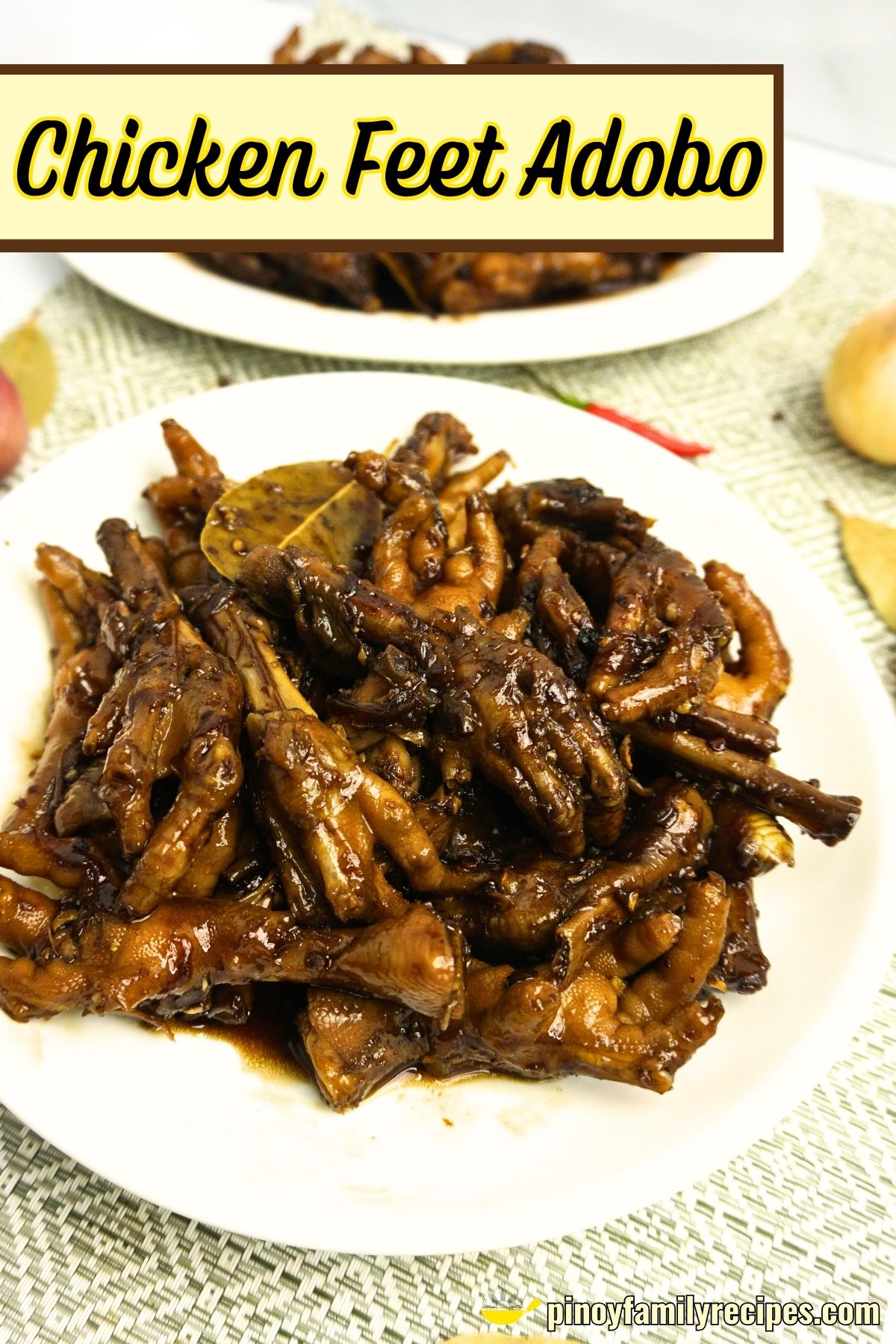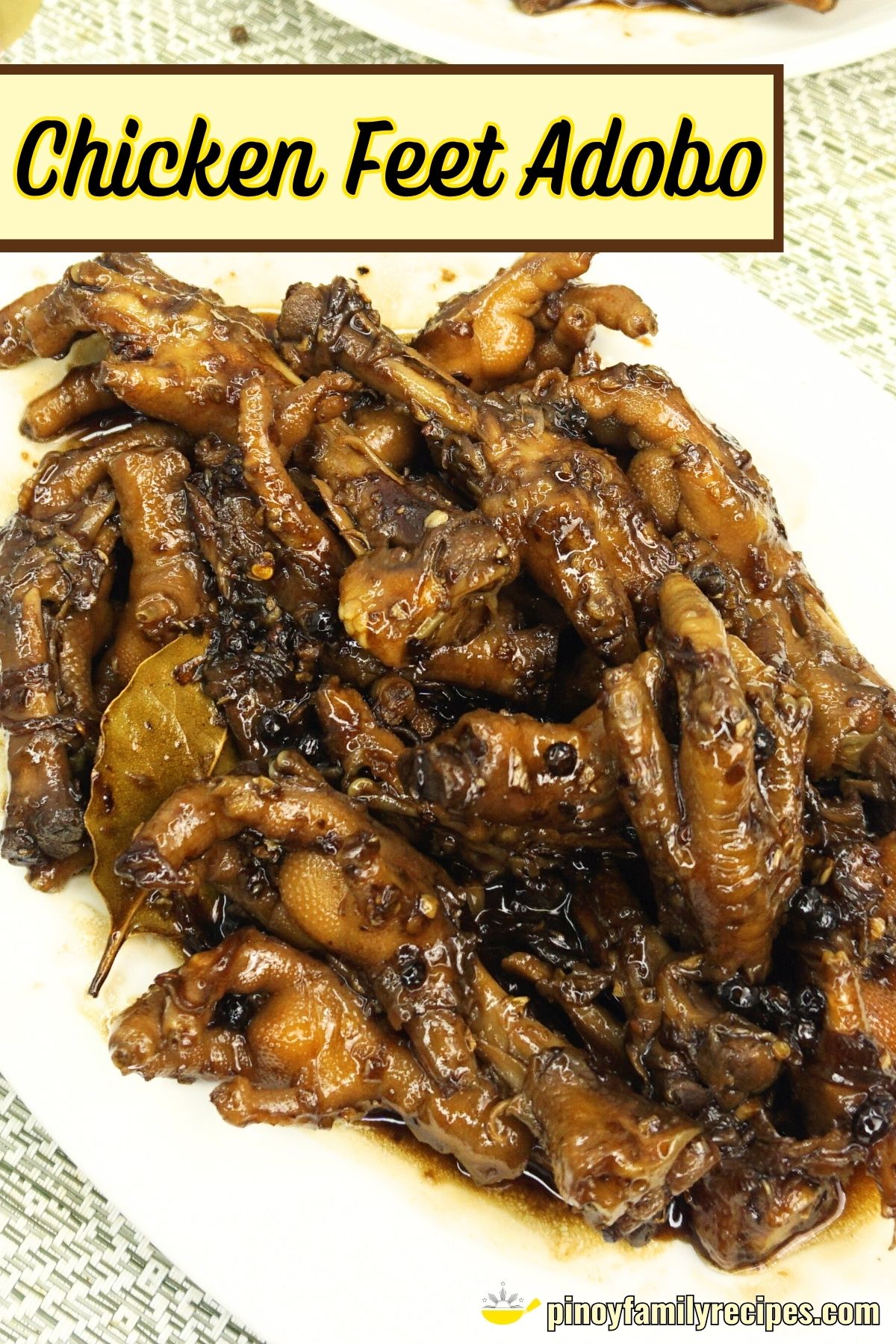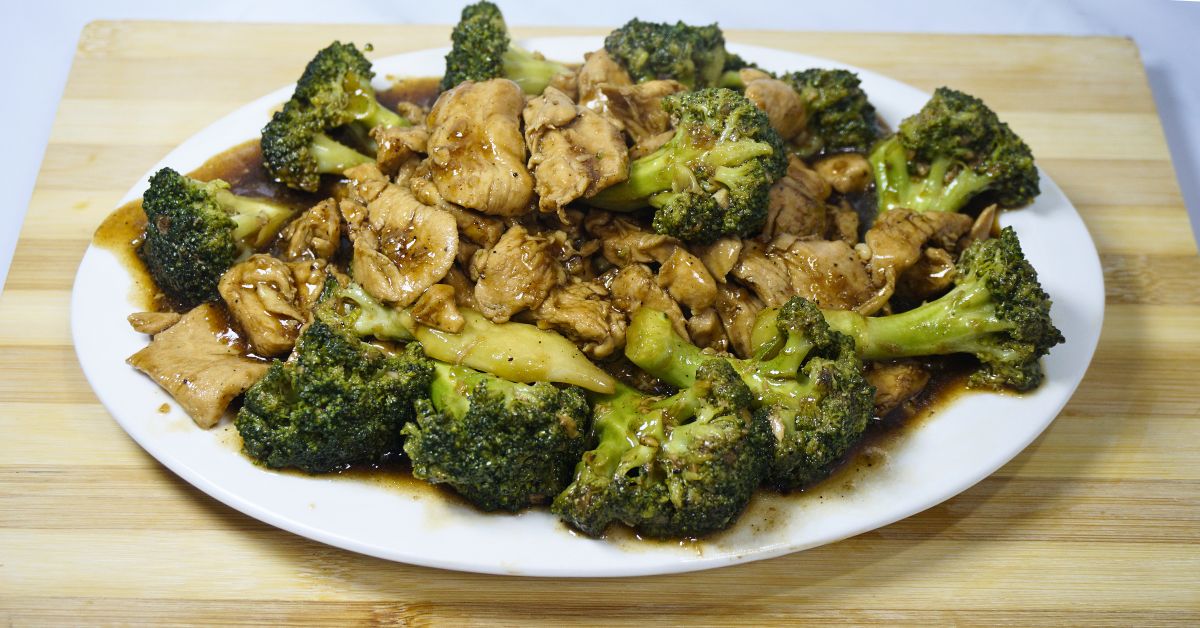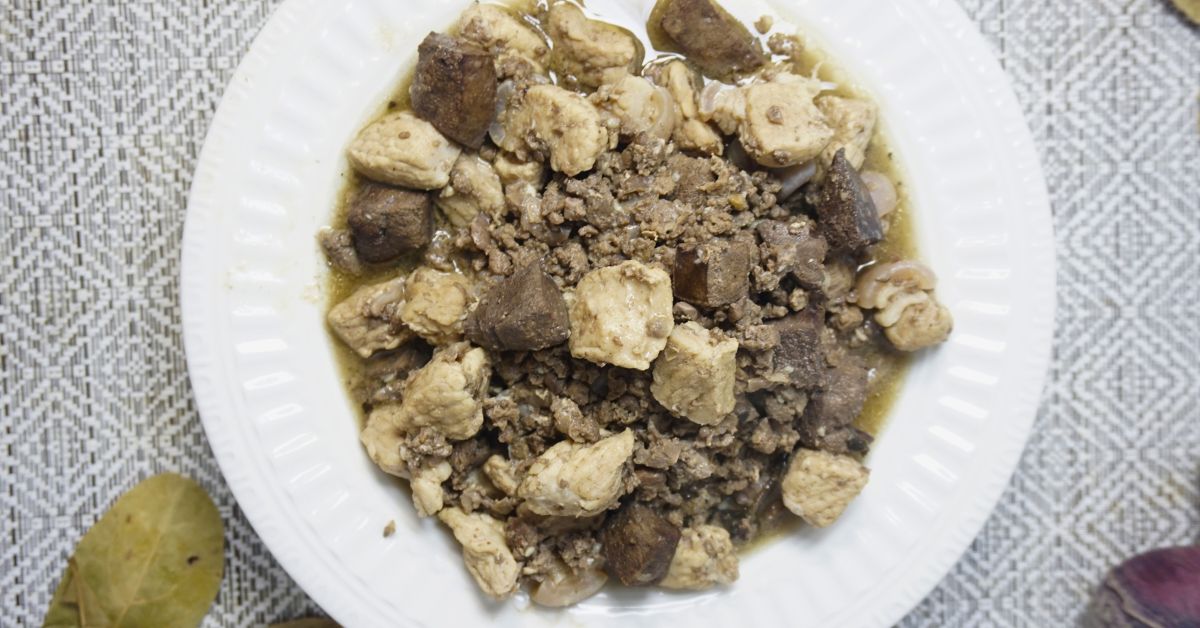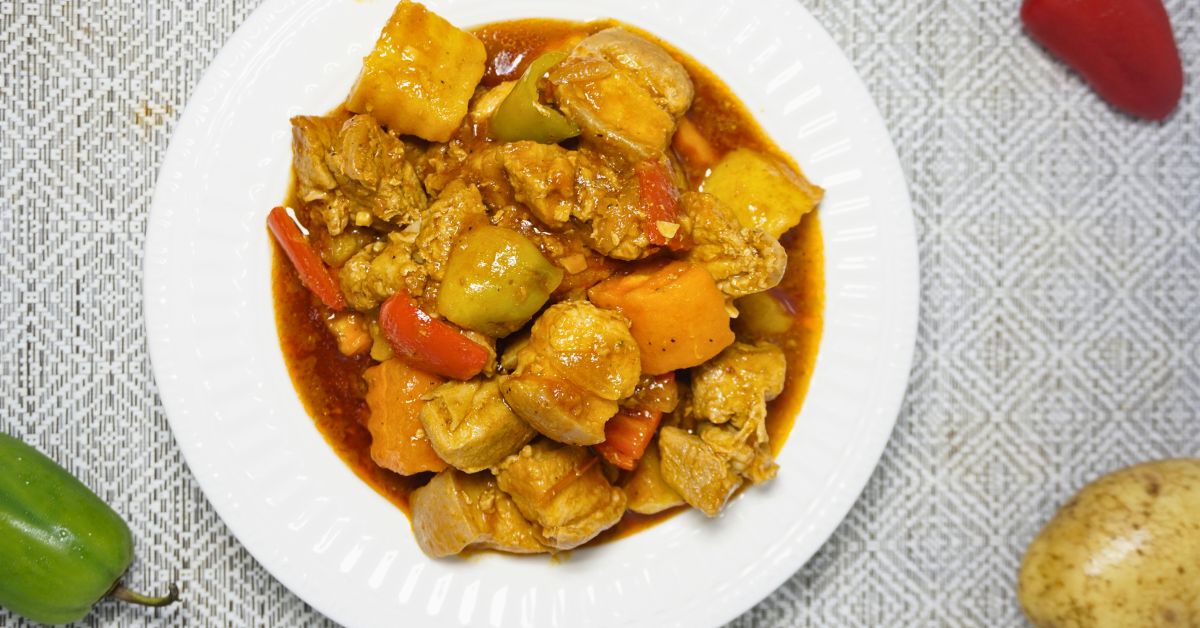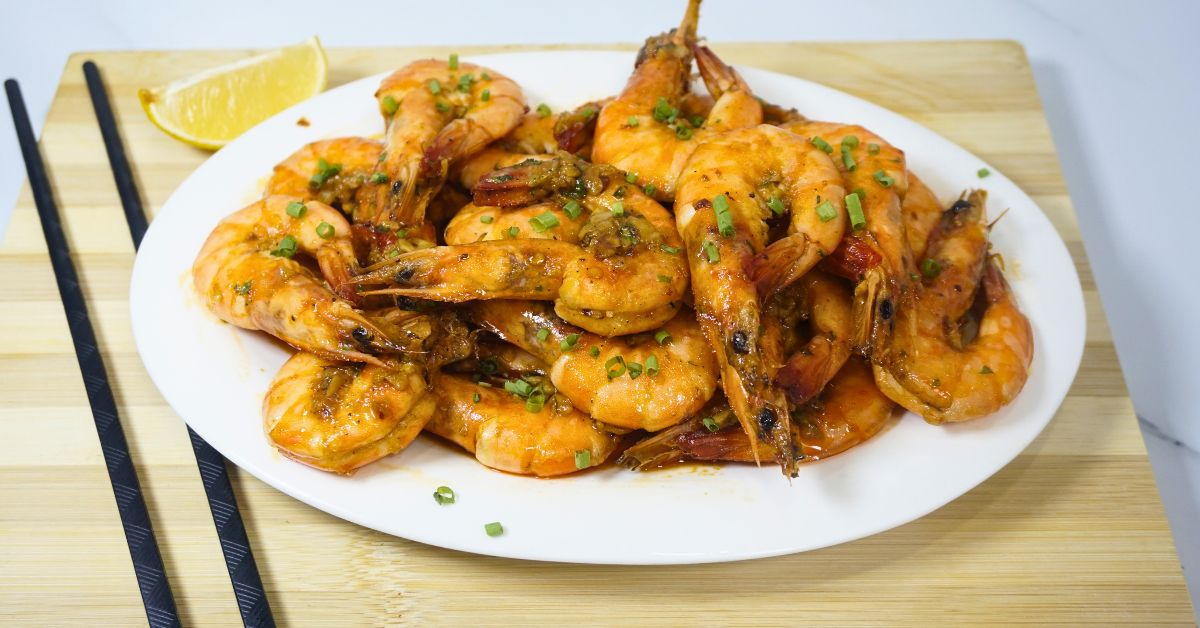
Forget about the cringe, because let me tell you, chicken feet adobo is one of those dishes that will have you asking for extra rice!
I know you love our chicken adobo, but I am sure you won’t get enough of this dish too!
Just like tongue, blood, and intestines, chicken feet might seem unusual at first. But in Filipino cuisine, we have a way of turning these into something truly delicious. Imagine tender chicken feet cooked until they’re melt-in-your-mouth soft, simmered in a savory sauce made of soy sauce, vinegar, garlic, and bay leaves.
Once you try Adobong Paa ng Manok, you’ll understand why it’s a beloved Filipino comfort food. It’s rich in flavor, goes perfectly with steamed rice, and is sure to satisfy your cravings.
Don’t knock it until you’ve tried it—let’s explore the wonderful world of Filipino flavors together!
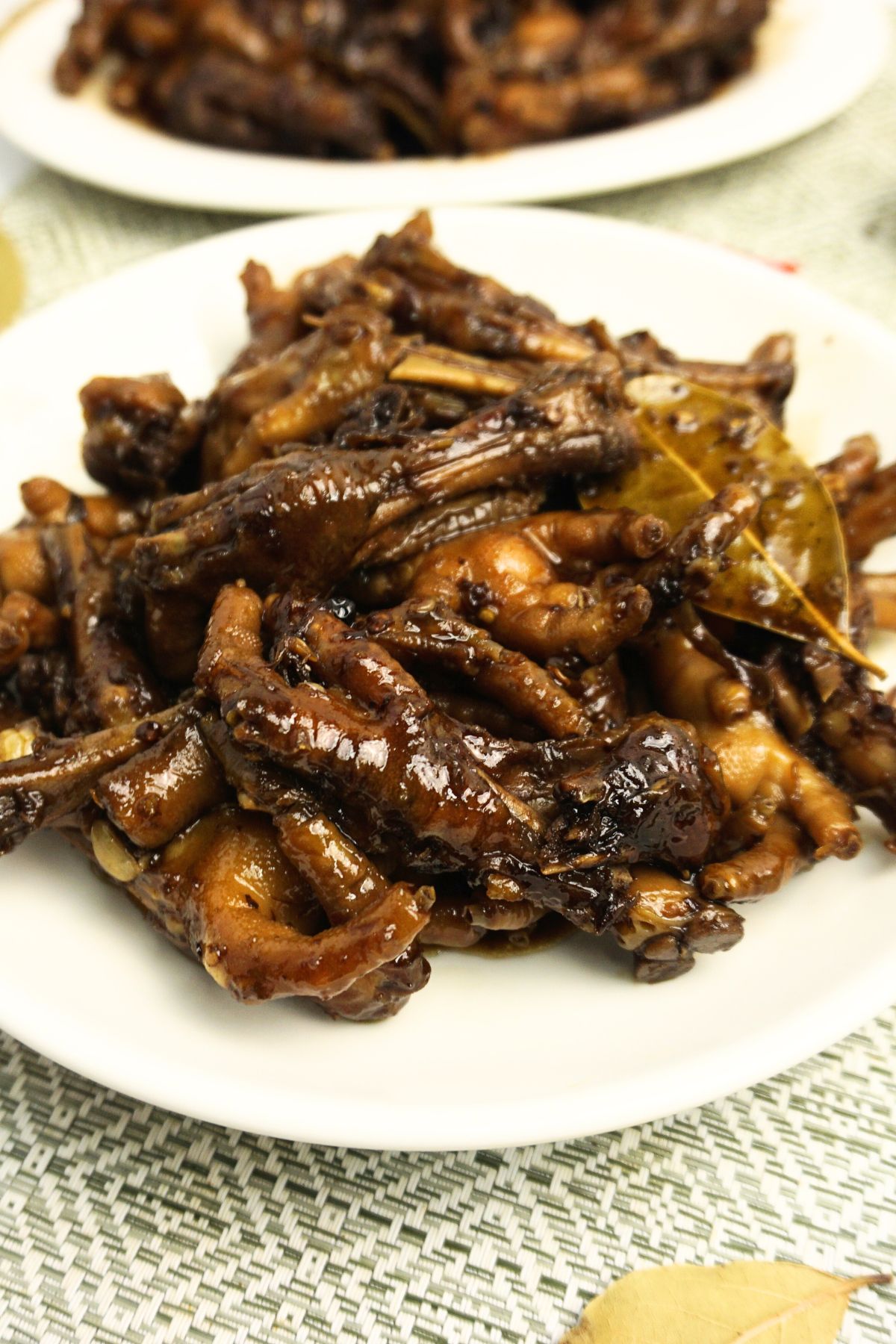
How To Prepare the Chicken Feet
Rinse Thoroughly: Place the chicken feet in a colander or strainer and rinse them under cold running water. Use your hands to rub and remove any dirt or debris from the surface.
Trim Nails: Use kitchen shears to trim off the nails at the tips of the chicken feet. This step helps in cleaning and improves the appearance of the dish.
Remove all the dirt: Make sure that there are no calluses and dirt left on the chicken feet by scrubbing them gently with a brush or a clean cloth. Pay close attention to the crevices and folds to ensure thorough cleaning. Rinse them again under cold running water to wash away any remaining debris.
Blanching: I prefer to blanch the chicken feet in boiling water for about 2-3 minutes. This helps to further clean the feet and remove any impurities. After blanching, drain the chicken feet and rinse them again under cold water.
Final Rinse: Give the chicken feet one final rinse under cold water to ensure they are thoroughly cleaned and ready for cooking.

Chicken Feet Adobo Ingredients
Chicken Feet: Cleaned and nails trimmed, these chicken feet will add a gelatinous texture to the dish and absorb the savory adobo flavors.
Soy Sauce: Adds a rich, salty umami flavor that forms the base of the adobo marinade, enhancing the chicken feet’s taste.
Vinegar: Provides acidity to balance the richness of the soy sauce, creating a tangy undertone in the adobo sauce.
Garlic: Minced for aromatic flavor, garlic infuses its pungent essence into the dish, complementing the chicken feet.
Onion: Chopped onion adds sweetness and depth to the adobo sauce as it cooks down with the chicken feet.
Bay Leaves: Infuse a subtle earthy flavor and aroma into the adobo sauce, enhancing its complexity.
Whole Black Pepper: Provide a mild heat and peppery flavor that complements the savory notes of the dish.
Cooking Oil: Used for sautéing the garlic and onion, adding richness and ensuring they caramelize evenly.
Sugar (optional): Balances the acidity of the vinegar and enhances the overall flavor profile of the adobo sauce.
Salt and Pepper: Adjusted to taste, these seasonings ensure the adobo sauce is perfectly seasoned.
Oyster Sauce (optional): Adds depth and richness to the adobo sauce, intensifying its savory flavor.
Dried Chili (optional): Adds a spicy kick to the dish, perfect for those who enjoy a bit of heat in their adobo.
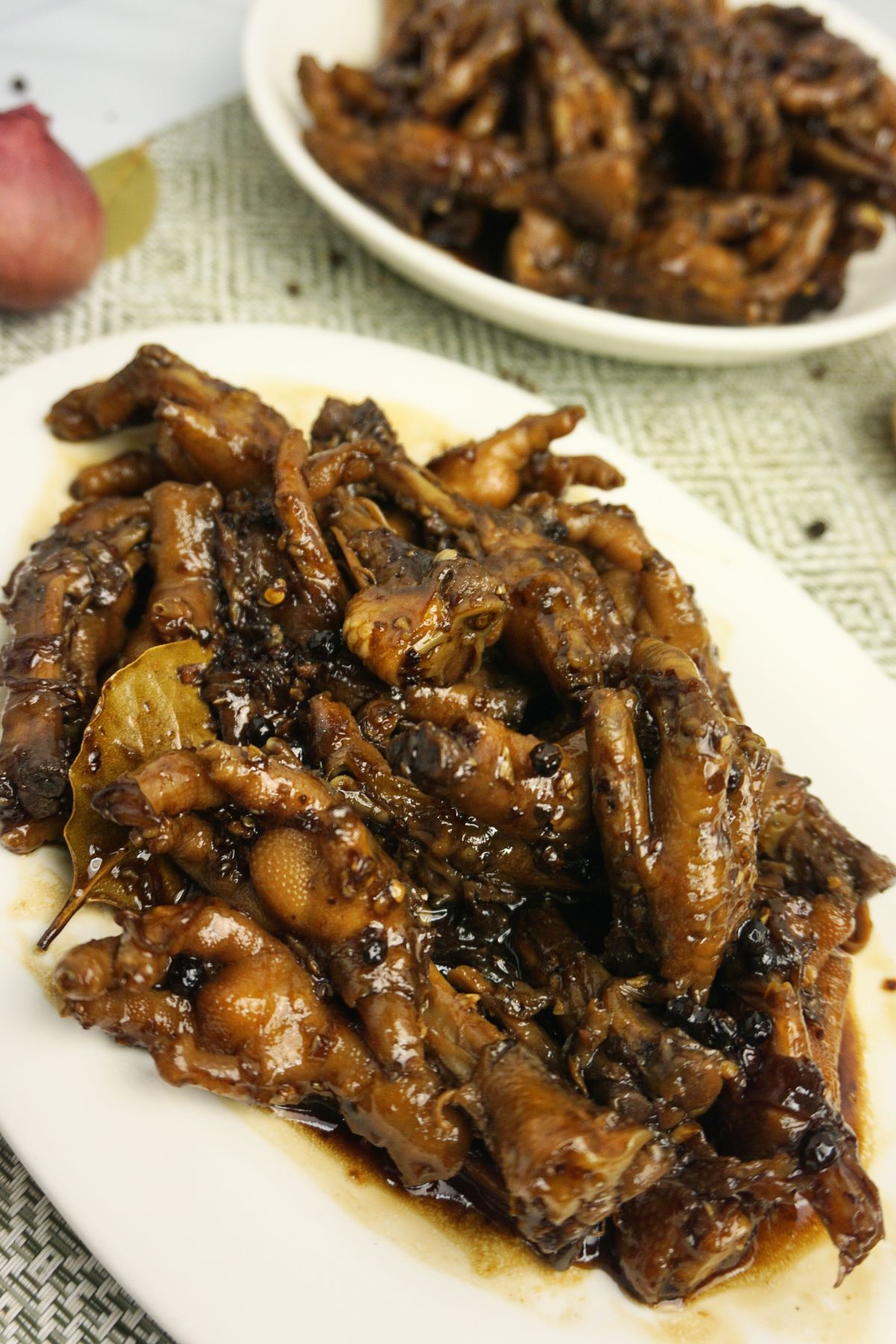
How to Cook Adobong Paa ng Manok
Cleaning and Marinating the Chicken Feet
First, clean the chicken feet thoroughly by rinsing them under cold running water and trimming off the nails using kitchen shears. Optionally, blanch the chicken feet in boiling water for 2-3 minutes to ensure they’re free from any impurities. Drain and set aside.
In a bowl, combine the cleaned chicken feet with soy sauce and minced garlic. Mix everything well, ensuring the chicken feet are evenly coated. Let it marinate for at least 30 minutes to 1 hour. This allows the flavors to penetrate the meat for a more delicious dish.
Sautéing and Simmering
Heat cooking oil in a large pot or deep skillet over medium heat. Add the chopped onion and sauté until it turns translucent and aromatic. This adds a sweet undertone to the dish.
Next, add the marinated chicken feet (along with any remaining marinade) to the pot. Cook the chicken feet until they become lightly browned, stirring occasionally to ensure even cooking.
Creating the Adobo Sauce
Pour in the reserved marinade, vinegar, and water into the pot with the chicken feet. If using oyster sauce, bay leaves, whole black peppercorns, and dried chili, add them now for added depth of flavor. Stir everything together to combine well.
Bring the mixture to a boil over medium-high heat. Once boiling, reduce the heat to low, cover the pot, and let it simmer gently for about 45 minutes to 1 hour. This slow simmering allows the chicken feet to become tender and absorb all the savory flavors of the adobo sauce. Stir occasionally to prevent sticking and ensure even cooking.
Adjusting Seasoning and Serving
After simmering, taste the adobo sauce and adjust the seasoning as needed with salt, pepper, and sugar to achieve the perfect balance of flavors. The sugar can be added if you prefer a slightly sweeter adobo.
Transfer the cooked Adobong Paa ng Manok to a serving dish. Serve it hot with steamed white rice, allowing the tender chicken feet and flavorful sauce to complement each other perfectly.
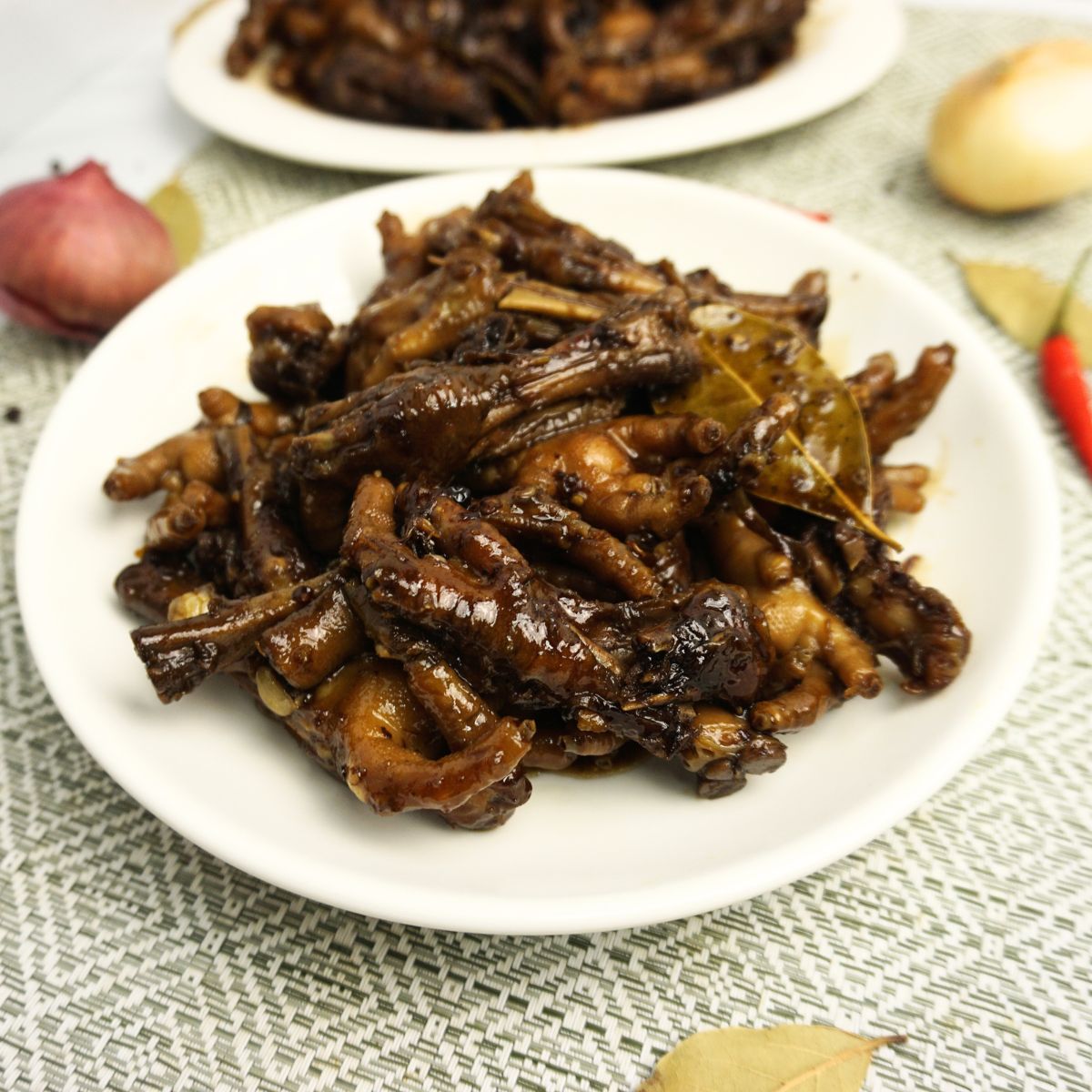
Tips on Cooking the Adobong Paa ng Manok
Cooking Adobong Paa ng Manok, a Filipino favorite, is all about achieving tender chicken feet infused with rich adobo flavors. Here are some tips to ensure your dish turns out perfectly:
- Thorough Cleaning: Start by cleaning the chicken feet well, ensuring all dirt and debris are removed. Trim the nails for a neat appearance.
- Marinating Time: Allow the chicken feet to marinate in soy sauce and minced garlic for at least 30 minutes to 1 hour. This step enhances flavor absorption and tenderness.
- Sautéing for Flavor: When sautéing the chopped onions, cook them until they are translucent and aromatic. This adds a sweet undertone to the dish.
- Simmer Slowly: Once you add the chicken feet to the pot with the reserved marinade, vinegar, and water, bring it to a boil then lower the heat to simmer. Cover and let it cook gently for 45 minutes to 1 hour. This slow cooking process allows the flavors to meld together and ensures the chicken feet become tender.
- Stir Occasionally: Stir the pot occasionally during simmering to prevent sticking and ensure even cooking of the chicken feet.
- Adjust Seasoning: Taste the adobo sauce towards the end of cooking and adjust the seasoning with salt, pepper, and sugar according to your preference. This step helps to balance the flavors perfectly.
- Optional Ingredients: Experiment with additional ingredients like oyster sauce for added depth or dried chili for a spicy kick, adjusting quantities based on your taste.
- Serve Hot: Adobong Paa ng Manok is best enjoyed freshly cooked and hot, served with steamed white rice to soak up the delicious sauce.
Frequently Asked Questions
Yes, when cleaned and cooked properly, chicken feet are safe to eat and are enjoyed in many cultures around the world.
Clean chicken feet by rinsing them thoroughly under cold water, trimming off nails, and optionally blanching to remove impurities.
Yes, you can adjust the spice level by reducing or omitting dried chilies and black peppercorns according to your preference.
Serve Chicken Feet Adobo with steamed rice and traditional Filipino sides like atchara (pickled vegetables) or cucumber salad for a complete meal.

Adobong Paa ng Manok
Ingredients
- 1 kilogram Chicken Feet (cleaned and nails trimmed)
- 1/2 cup Soy Sauce
- 4 cloves Garlic (minced)
- 2 tbsp Cooking Oil
- 1 Onion medium(chopped)
- 1/2 cup Vinegar / White or Cane vinegar
- 1/2 cup Water
- 2 tbsp Oyster Sauce (optional, for added flavor)
- 1 tsp Whole Black Pepper
- 2 pieces Bay Leaves
- Dried Chili (optional, for a spicy kick)
- 1 tbsp Sugar (optional, to taste)
- Salt and Pepper (to taste)
Instructions
- Clean the chicken feet thoroughly. Trim off the nails using kitchen shears and rinse well. Optionally, blanch the chicken feet in boiling water for 2-3 minutes to remove any impurities, then drain and set aside.
- In a bowl, combine the chicken feet, soy sauce, and minced garlic. Mix well and let it marinate for at least 30 minutes to 1 hour for better flavor absorption.
- Heat the cooking oil in a large pot or deep skillet over medium heat. Add the chopped onion and sauté until translucent. Add the marinated chicken feet (reserve the marinade) and cook until lightly browned.
- Pour in the reserved marinade, vinegar, and water.
- Add the oyster sauce (if using) bay leaves, whole black peppercorns, and dried chili (if using). Stir to combine.
- Bring the mixture to a boil, then reduce the heat to low. Cover and let it simmer for about 45 minutes to 1 hour, or until the chicken feet are tender and the sauce has thickened. Stir occasionally to prevent sticking and ensure even cooking.
- Taste the sauce and adjust the seasoning with salt, pepper, and sugar (if desired) to balance the flavors.
- Transfer the adobong paa ng manok to a serving dish. Serve hot with steamed white rice. Enjoy!
Video
Notes
- If you prefer a slightly gelatinous texture, cook the chicken feet a bit longer to extract more collagen.
